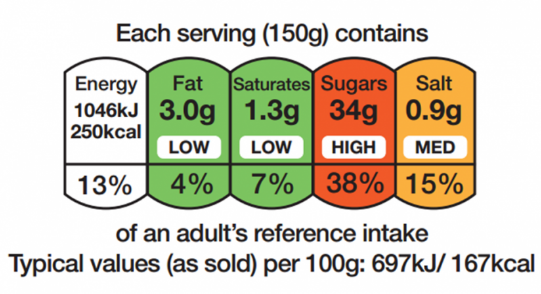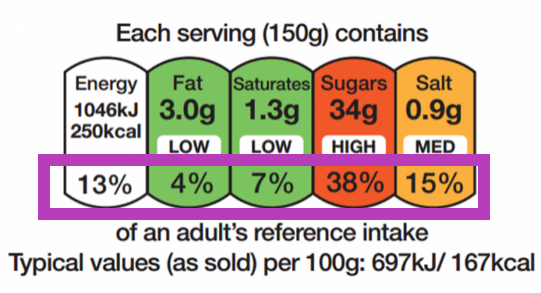Check the label
How to use nutritional labels on pre-packed foods to find calorie, fat, saturates, sugars and salt content information.
Nutritional labels give you the information you need to understand which products are healthier. By checking the label each time you buy something, you will take more control of your shopping habits.
Whilst it is mandatory for nutrition information to be displayed on the back of all food packaging, some supermarkets and food manufacturers also display nutritional information on the front of pre-packed food in a handy traffic light system.
Using the traffic light label is very helpful when you want to compare the calorie, fat, sugar and salt content of different food products at a glance. On this page, we will give tips on how to check the nutritional information on pre-packaged foods and help you understand what it means.
Find out more about nutrients on our webpage.
Traffic light labels
The traffic light labelling system will tell you whether a food has high, medium or low amounts of fat, saturated fat, sugars and salt. It will also tell you the number of calories and kilojoules in that particular product.
-
energy (kilojoules (kj) and calories (kcal))
-
fat
- saturates
- sugar
- salt

This is an image of the traffic light label found on some foods. The traffic light label is colour coded and shows that green is low in a particular nutrient, amber means medium and red is high in a nutrient.
-
Red means the product is high in a nutrient and you should try to cut down, eat less often or eat smaller amounts.
-
Amber means medium. If a food contains mostly amber, you can eat it most of the time.
-
Green means low. The more green lights a label displays, the healthier the food is.
Did you know? When you see ‘kcal’ on the nutritional label, it means the number of calories that product has.
Reference Intake indicators
Reference Intake is shown in percentages and provides information on how the amount of fat, saturates, sugars and salts within that product fits into your daily recommended diet. In the case of this food label, the amount of sugar is 38% of the total recommended daily intake, therefore you should be careful of the amount of sugar consumed in other foods throughout the day.

Traffic light label highlights the reference indicator
Calories
Eating and drinking more calories than we need can lead to weight gain. Excess weight gain can lead to obesity. Obesity increases the risk of some types of cancer including bowel cancer and breast cancer and increases the likelihood of developing serious conditions including coronary heart disease, stroke and type 2 diabetes.
Knowing the calorie content of food and drink can help ensure you're not consuming more calories than you need.
Useful food shopping tips
-
Use traffic light labels - try to go for foods with more green or amber lights and fewer red lights.
-
Use the reference intake % to guide your consumption throughout the day.
-
See if other similar products have lower amounts of sugar, fats and salt.